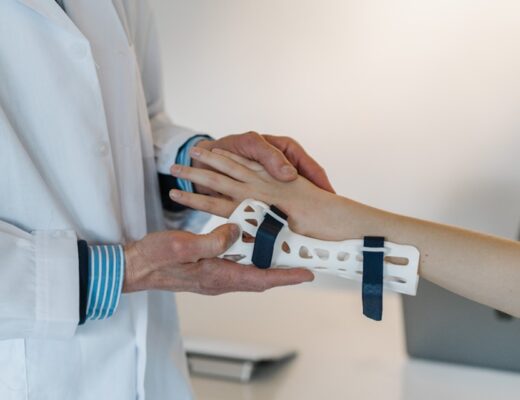Maintaining cleanliness and sterility is paramount in healthcare and medical facilities. In this pursuit, autoclaves have emerged as indispensable tools, serving as steam-powered guardians that are vital in assuring the health and safety of patients and healthcare professionals alike. This listicle will explore the significance of an autoclave for healthcare, its operation, and its critical role in safeguarding health.
The Role Of Autoclaves In Healthcare
Autoclaves, also known as steam sterilizers, are sophisticated devices used in healthcare settings to sterilize medical equipment, instruments, and materials. They are essential for preventing the transmission of infections and diseases. These devices use high-pressure steam to kill bacteria, viruses, and other microorganisms on medical equipment.
Sterilization Process
Autoclaves employ a highly effective sterilization process. The steam generated inside the autoclave chamber is heated to a high temperature, typically around 121°C (250°F) or higher. This extreme heat, combined with the pressure inside the chamber, effectively kills all microbial life forms. The process is so efficient that it can sterilize even the most heat-resistant spores and microorganisms.
Protection Against Infections
The importance of autoclaves in healthcare cannot be overstated. They serve as a crucial line of defense against infections resulting from contaminated medical equipment. Surgical instruments, dental tools, and other medical devices must be completely free of microorganisms to ensure the safety of patients during procedures.
Versatility In Sterilization
One advantage of autoclaves is their versatility. They can sterilize various materials, from surgical instruments to laboratory glassware. This versatility makes autoclaves indispensable in various healthcare settings, including hospitals, dental clinics, laboratories, and research facilities.
The Importance Of Validation
These devices require periodic validation and monitoring to maintain their effectiveness. Validation involves testing the autoclave’s ability to reach and maintain the required temperature and pressure for sterilization. Regular validation ensures that the autoclave continues to perform at its optimal level, safeguarding the health of patients and healthcare professionals.
Types Of Autoclaves
Different types of autoclaves are available, each designed to meet specific needs in healthcare settings. The most common types include:
Gravity Autoclaves: These autoclaves allow steam to flow downward through the chamber. They are suitable for sterilizing liquids and other heat-resistant materials.
Pre-vacuum Autoclaves: They use a vacuum pump to remove air from the chamber before introducing steam. This method ensures better steam penetration into porous materials, making them ideal for sterilizing instruments with complex shapes.
Tabletop Autoclaves: Compact and portable tabletop autoclaves are suitable for smaller healthcare facilities and dental clinics. They provide a cost-effective solution for sterilizing instruments and equipment.
Large Autoclaves: They are designed to handle high volumes of medical instruments and materials. They are commonly found in hospitals and research laboratories.
Regular Maintenance
To ensure the continued effectiveness of autoclaves, regular maintenance is essential. This includes routine cleaning, inspection, and calibration of the equipment. Additionally, autoclave operators must follow strict protocols for loading and unloading instruments to minimize the risk of contamination.
Adherence To Sterilization Protocols
Proper training and adherence to sterilization protocols are crucial when using these devices. Healthcare professionals must follow established guidelines to ensure the complete sterilization of instruments and materials. Failure to do so can lead to the spread of infections and compromise patient safety. Additionally, strict adherence to sterilization protocols not only protects patients but also upholds the reputation and integrity of healthcare institutions. Consistently following these guidelines is a fundamental part of providing high-quality care and maintaining the trust of both patients and the broader community.
Eco-Friendly Advancements
In recent years, there has been a growing emphasis on eco-friendly autoclave technology. Some autoclaves now feature energy-saving options, such as reduced water usage and shorter cycle times. These advancements contribute to sustainability efforts and help healthcare facilities reduce operating costs. Furthermore, eco-friendly autoclave technology reduces the environmental footprint and aligns with the global healthcare sector’s commitment to responsible resource management. As healthcare providers strive to enhance their sustainability practices, these energy-saving features represent a significant step towards a greener, more cost-effective future.
Conclusion
An autoclave for healthcare is a formidable steam-powered guardian in the healthcare industry, where safety and sterility are paramount. Their ability to efficiently sterilize medical equipment and materials plays a pivotal role in safeguarding the health of patients and healthcare professionals. These devices have become indispensable tools in healthcare settings, from small tabletop autoclaves to large, high-capacity models.
As healthcare evolves and prioritizes patient safety, autoclaves will remain a cornerstone of infection control. Through proper validation, maintenance, and adherence to sterilization protocols, healthcare facilities can rely on autoclaves to maintain the highest standards of cleanliness and sterility, ultimately ensuring the well-being of those they serve. In a world where health and safety are paramount, autoclaves remain unwavering steam-powered health guardians.








No Comments